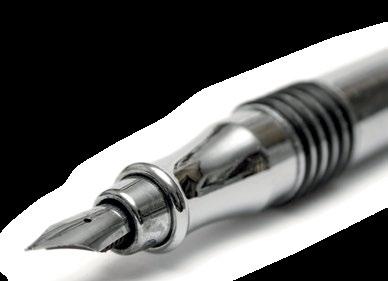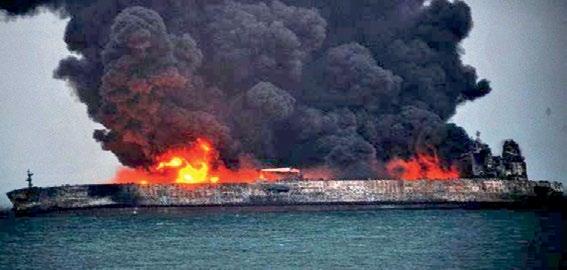
37 minute read
Safety of Navigation
We would like to reiterate the importance of practising safe navigation by following the International Regulations for preventing Collisions at Sea , 1972 (COLREGS) and fully comprehending the contents of the Navigation Operational Manual by all the officers and crew engaged in navigation. Maintaining the highest standards of navigational safety is of paramount importance for the safety of the crew, ship, cargo and the environment.
Double hull tankers may create a sense of safety against collisions, allisions or groundings due to the presence of the double hull space and the inner shell plating separating the cargo from the ballast. The recent collision between M/T “Sanchi” and M/V “CF Crystal” proved that this is not the case. The energy released during a collision of two ships sailing at full speed ahead (high energy collision) is enormous and the results such as the breaching of watertight bulkheads, explosions & fire, the sinking of the vessel, loss of life and environmental pollution are catastrophic.
The two ships were in laden condition sailing in the East China Sea when the collision occurred at about 1950 LT on January 6th, 2018 in position 30°51.1’N/124°57.6’E. The particulars of the ships involved and the collision data are shown below:
M/T Sanchi M/V CF Crystal
speed 10.5 knots 13.6 knots
course 358° 226°
angle of collision 44 °
COLREGS give-way vessel stand-on vessel
cargo gas condensate crude oil sorghum in bulk
DWT 164,160 tons 75,725 tons
ship type Suezmax oil tanker Panamax bulk carrier
hull damage breaching of cargo & ballast tanks No2 & No3 on the starboard side
results of the collision explosion, fire, sinking of the ship and loss of all 32 crew members extensive structural damage extending from the ship's bow up to cargo hold No3
fire, ship abandoned, all crew rescued by the fishing boat ZHEDAIYU 03187
Results of high energy collisions

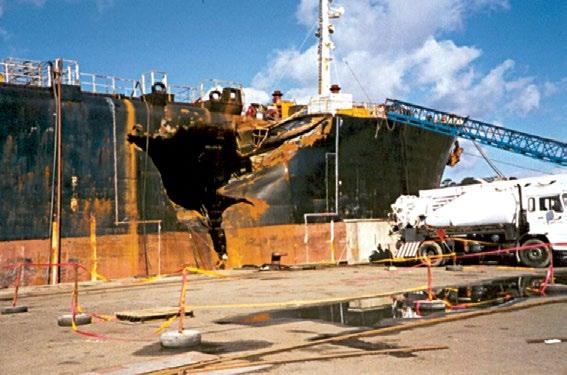
Side shell and inner shell damage of M/T Sanchi


The contributory factors that led to this very serious marine casualty are identified in the recent OCIMF’s safety bulletin for inspectors, “Sanchi & CF Crystal Collision Incident”, which has been forwarded to all the ships of our fleet along with the Report on the Investigation of the Collision issued by the Maritime Safety Administration of P.R. China. The failure of both vessels to comply with the basic COLREG regulations is strongly emphasized in the OCIMF’s safety bulletin. The following failures were identified: •Both vessels failed to comply with Rule 5 (lookout), Rule 7 (risk of collision) and Rule 8 (action to avoid collision) of the COLREGs. •The Sanchi failed to comply with Rule 15 (crossing situation) and Rule 16 (action by give-way vessel) of the COLREGs. •The CF Crystal failed to comply with Rule 17 (action by standon vessel) of the COLREGs.
Lessons learnt from this serious casualty:
1. There should be an awareness that equipment such as AIS and ECDIS are electronic aids to navigation. The purpose of AIS is to help identify ships, assist in target tracking and in search and rescue operations, simplify information exchange (e.g. reduce verbal mandatory ship reporting) and provide additional information to assist with situational awareness. These are additional sources of information and should not replace the use of established navigational procedures such as Radar/ ARPA and visual bearings for the purposes of collision avoidance.
2. The use of electronic aids to navigation does not release the OOW from their responsibility of complying with the COLREGs at all times and using all other available means to judge navigational situations.
3. There should be awareness and familiarity with procedures for backing up Voyage Data Recorder (VDR) information. The limitations of VDR and associated procedures for backing up VDR data should be fully understood and practised so as to ensure that as much relevant data as possible is available post-incident. This ensures that the causes and lessons learnt from all incidents are extracted and acted upon to the fullest extent possible.
Let this be the last tragic navigation casualty. Navigational officers have a moral obligation to themselves, their colleagues onboard the ship and their families ashore to exercise extreme caution and maintain full concentration during the watch. Distractions during the navigation watch like listening to music, using mobile phones or engaging in discussions irrelevant to navigation may have catastrophic consequences.
Resilience, Well-Being and Drydocks
The shipping industry remains a field full of challenges for all seamen. It is a field where a person’s physical and mental well-being are put to the test. Nevertheless, it is an area which can still be rewarding and give each person engaged a great sense of achievement and fulfillment. One of the most demanding occasions is that when a vessel is under repair in dry dock. This is a situation in which seamen have to adapt to a performance mode which is different from that required at sea. At the shipyard, the challenges are related to safety, deadlines, time pressure from various sources, unknown tasks and unforeseen problems such as wrong spares, etc. The attending superintendent works as an organizer and conductor as well as the liaising bond among the yard, the office and then the Officers and crew of the vessel. He has to observe, organize, be proactive, listen, get feedback, boost his team’s mentality and make sure that everything runs smoothly. As leaders of their teams, the Master and the Chief Engineer of the vessel have to take swift decisions, delegate tasks promptly, and make their teams work effectively. Each team member tries to perform to the best of their ability despite the short time or the long list of tasks. This is where strong bonding is created. The superintendent, the officers and crew are in the front line – at the heart of problems that can only be solved by teamwork. Teamwork is the key element for a strong bond among our Seamen. Working as a team not only makes the members feel there is unity but it also gives them a sense of purpose and achievement, which are important factors for mental well-being. It goes without saying that there will be difficult times, when the deadlines have to be met or where the seamen may have to work round the clock to get the job done. A smile, a good talk, a pat on the back and an appreciation of the job in progress will become the fuel that provides the team members with the energy to complete the task. At other times, a joke during a short break or a meal with the team, a walk on the vessel’s deck or a small birthday celebration will boost the team’s morale and will keep them going. Finally, a one-to-one talk with a crew member who seems preoccupied or seeks support is a prime example of how we should care for each other. During the various drydocks of fleet vessels, the superintendents must remember that it is important to be close to all seamen and at the same time be available for them in case they want to talk. It is essential to show consideration and give appropriate time when there is a new task for the crew to handle, while always ensuring that safety is not compromised. Our ultimate goal is to get home safe and we can only achieve this by caring for ourselves and for others.

Issue 70-December 2019 During the demanding times of a dry dock, it is really important to keep a positive outlook, create and maintain a harmonious working environment, strengthen the teamwork between ship and shore staff, look out and care for each other. Both the acts of caring and giving/sharing are cultivated during resilience sessions on board, where our Seamen have the opportunity to share experiences, learn from the past and act in a safe mode at all times. The ability to bounce forward from a demanding situation is the essence of resilience. Being resilient, caring for oneself and for others, sharing, achieving, performing well, having a positive attitude despite the fatigue and being content with what one is doing are all fundamental elements of a person’s mental well-being. After all, it all begins with us and how we deal with things in life.
how we deal with things in life
positive coping statements
Well-Being
mental/physical well-being caring for ourselves and others
boosting morale
Odessa Forum June 201 9
The Odessa Forum, held in Londonskaya Hotel on 12th & 13th June, was a thought-provoking and interesting event where the attendees shared opinions and ideas, and made suggestions for further improvement. On the first night of the Forum, a dinner party was attended by the Seafarers accompanied by their wives and children. This was a very good opportunity to share ideas and make the bonds between the Seafarers and Head Office stronger and more meaningful. On the whole, it was a thoroughly enjoyable event.
The Forum agenda included a variety of interesting topics such as the bunkering process and the treatment of bunkers, voyage management, energy management and PSC high-risk items. Particular emphasis was given to safety/behavioural topics like chronic unease and weak signals, root cause analysis, the human factor and human error in navigational incidents. A presentation was also made regarding significant changes to the Company’s Safety Management System. As part of the Company’s commitment to its Seafarers’ well-being, a presentation on Preventive Medicine was made by an external attending speaker, Dr. Haris Karageorgiou, who as a gastroenterologist was able to present meaningfully very interesting statistics regarding Ukrainian Seamen’s health and useful information on maintaining a healthy way of life. What is more, an introduction to seafarers’ mental well-being was also made during a presentation on the first day. During this presentation, the officers were introduced to the notions of mental well-being and mindfulness and were
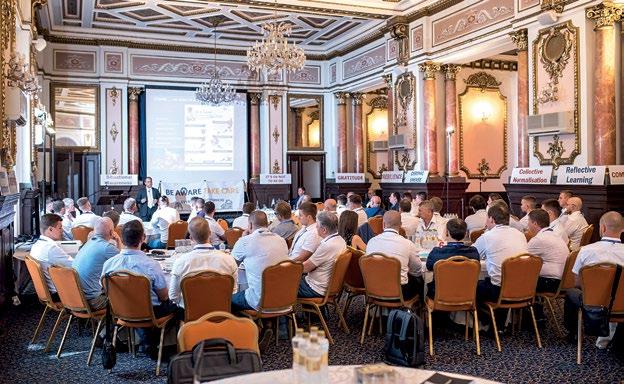
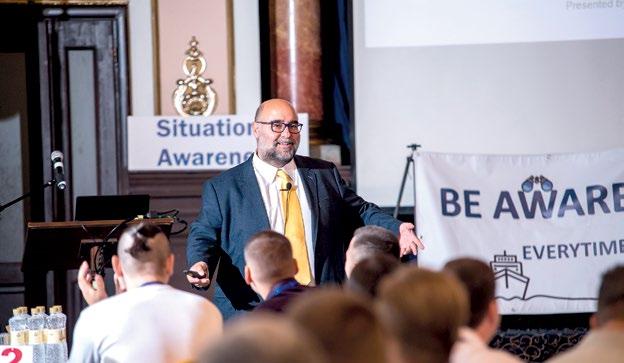

presented with techniques to anticipate stress such as mindful breathing. The participants warmly welcomed these mental well-being techniques. Last but not least, Mr. Gabriel Dovles of TQC gave presentations about UMS Operations, Cyber Security, Human Behaviour and Goal Zero.
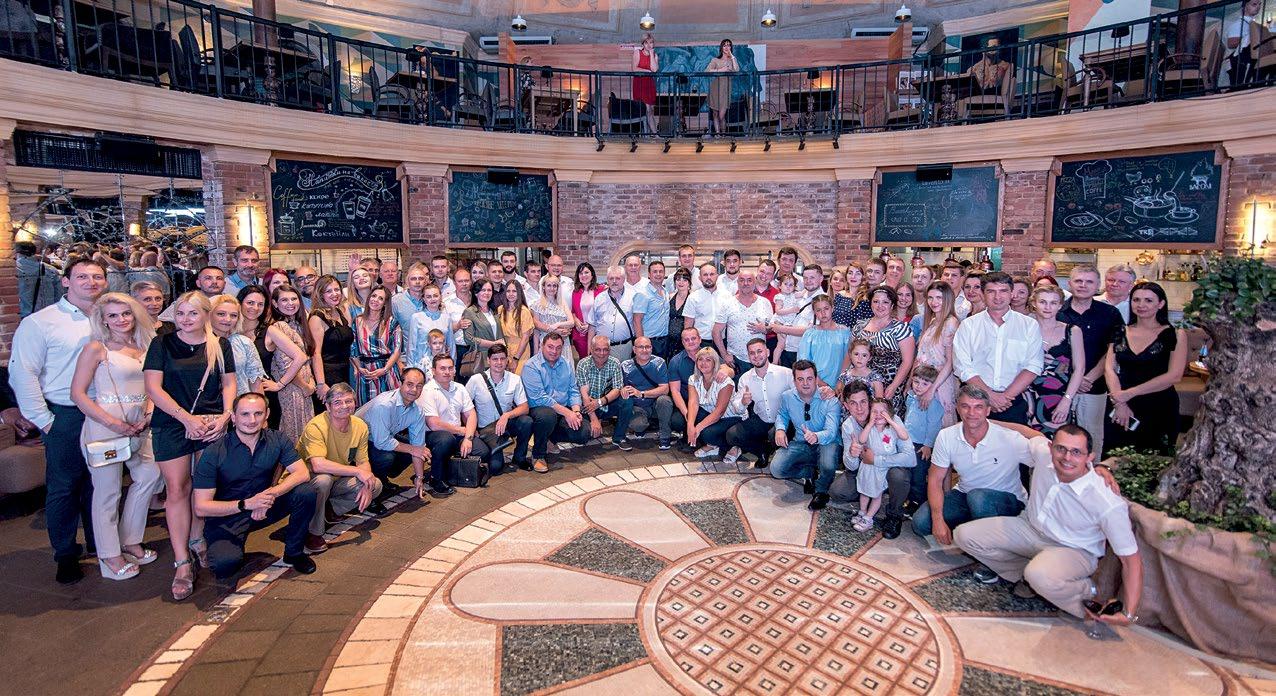
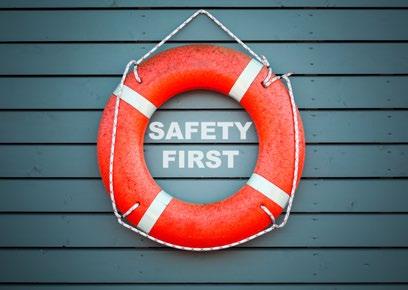
Message from the DPA
Dear seafarers,
We have previously talked about CHANGE and about the importance of embracing it as part of our lives. This is becoming increasingly important as we are entering a new decade. The word on which I want to focus this time is INTERVENTION. We have often discussed detecting weak signals, hazard identification and risk management, best practices and management of change. In all cases, the common denominator is INTERVENTION. We must intervene in a positive manner whenever we pick up an early signal of something going wrong. If we do not, then our barriers will fall and accidents will occur. We cannot walk by a safety violation or a hazard simply by thinking that “it is not my responsibility”, or “this is how it is done on this ship”, or “it has never happened before”, or “it will never happen to me”. Intervention is closely related to CARE. If we care about our colleagues, about our ship, about our job, about ourselves and our families, then we will intervene to stop a wrong practice. Our Stop Work Authority is a powerful tool in this respect, but our aim should be to be proactive and intervene timely and decisively to rectify problems well before having to resorting to an SWA. Intervention can save lives – it can save your life. Never walk by an unsafe condition or unsafe act or hazard without intervening. I wish you and your families all the best for the New Year and, of course, first of all, calm seas and safe voyages.
Anthony Lambros - Director & DPA
I welcome your comments, suggestions or feedback on the contents of this column (Safety First!) at q&s@centrofin.gr.
Goal Zero promotes our Safety Culture What is Safety Culture?
Culture is a word for the 'way of life' of groups of people, simply meaning the way they do things. So, by adding the word “Safety” before Culture it means the way we do things in terms of Safety. It is as simple as that, BUT different groups of people do not perceive Safety Culture in the same way. For example, it depends on how individuals understand their environment or how they behave. Safety Culture differs for every person or organization and may depend on the line of business you are in or the country you are from. For a company such as ours the aim is each and every one of us to be on the same level of safety culture, which is a positive one and should always be on the rise. The higher our Safety Culture becomes, the closer we get to our goal: GOAL ZERO accidents. Safety Culture depends greatly on the HUMAN FACTOR. The Human Factor is often the root cause of various accident cases The way to control the Human Factor is to control our behaviour. This is because the human factor depends greatly on how we behave! We learn how to behave from the time we are born, and we keep learning as we grow up in our social and work environments. In this diagram of the pyramids of incidents, it is obvious how

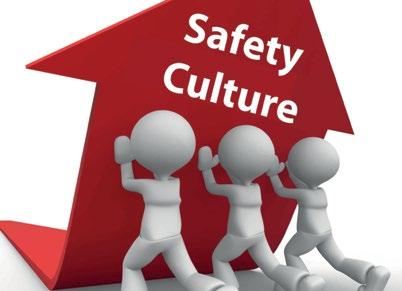
fundamental human behaviour is when it comes to the root cause of accidents! The Goal Zero project onboard aims for seafarers to realize certain behaviours. Goal Zero reminds us how to control or change our behaviour when it comes to safety. And if we believe in it, we can improve the behavioural barriers that assist us in accident prevention. Positive Safety Culture is visible when you are carrying out Reflective Learning, Resilience and LET sessions, sharing experiences and encouraging all your crew to speak up and voice opinions as shown in the pictures taken aboard our fleet vessels.
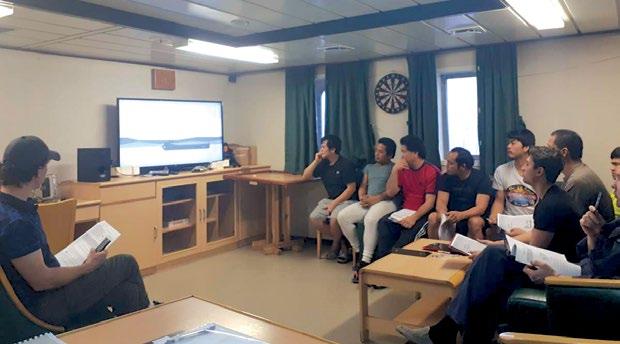
Keep your Behavoural Barriers STRONG!
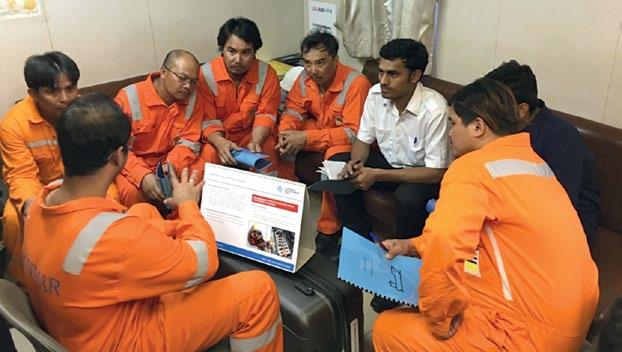
BarrierspreventtheHazardfrombecominganIncident
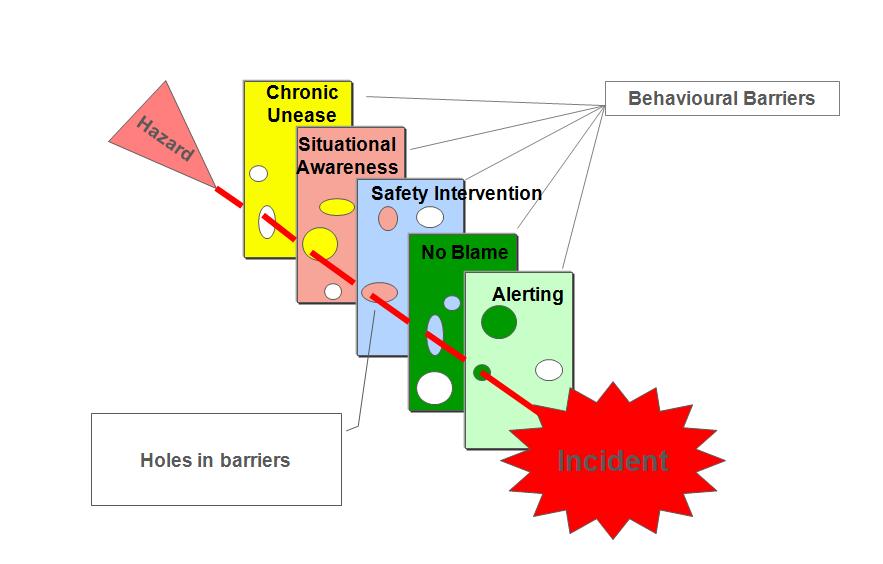
Keep your Behavioural Barriers STRONG!
When all your barriers don’t work properly at the same time... the holes line up... then the hazard passes through and results in an incident!
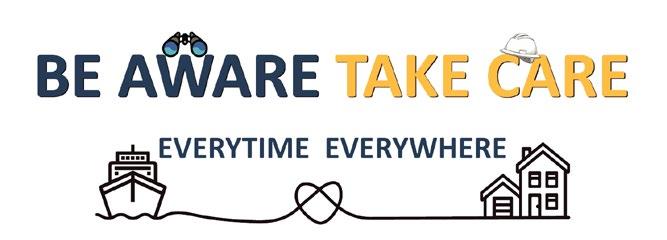
TRUST: Ten Really Useful Tips STRONG Behavioural Barriers
1. Chronic Unease: worry about what can go wrong. TRUST: Ten Really Useful Safety Tips
2. Avoid complacency: do not let your guard down. STRONG Behavioural Barriers
3. Observe differently: spot weak signals. 4. Situational Awareness: be aware of your surroundings. 5. Safety Intervention: act during unsafe situations. 6. Alert others to follow safe practices. 7. Adopt a no blame behaviour. 8. Teamwork: Proper DWPM and tool box talks are vital. 9. Don’t be afraid to voice your opinion. 10. Show that you care when someone is having a hard time. 1. Chronic Unease: worry about what can go wrong. 2. Avoid complacency: do not let your guard down. 3. Observe differently: spot weak signals. 4. Situational Awareness: be aware of your surroundings. 5. Safety Intervention: act during unsafe situations. 6. Alert others to follow safe practices. 7. Adopt a no blame behaviour. 8. Teamwork: Proper DWPM and tool box talks are vital. 9. Don’t be afraid to voice your opinion. 10. Show that you care when someone is having a hard time.
On the second day of the Forum, there were LFI sessions on Marine Mooring Incidents and Chronic Unease, during which facilitators guided both deck and engine officers. There followed an “Observing Differently” session, which proved successful, too. The ability to make detailed observations from different perspectives is fundamental for seamen as it allows them to maintain a state of chronic unease and alertness. The Forum was chaired by Yannis K. Prokopiou, Head of the M&T dept., and head office was represented by DPA Anthony Lambros, Technical Reporting Supervisor Dimitris Sarantis, Deputy DPA Elli Moretti, Marine Superintendent Capt. George Panousopoulos and Training Co-ordinator Chara Markatzinou. At the end of the Forum, a gift of appreciation was presented to the following officers and crew members for their long and loyal service and exceptional actions:
Rank / Name With Cenmar
Capt. ANDREYEV Sergiy Since 2012
Capt. KATYUKHIN Volodymyr Since 2000
Capt. KRAKOVSKY Mykhaylo Since 2012
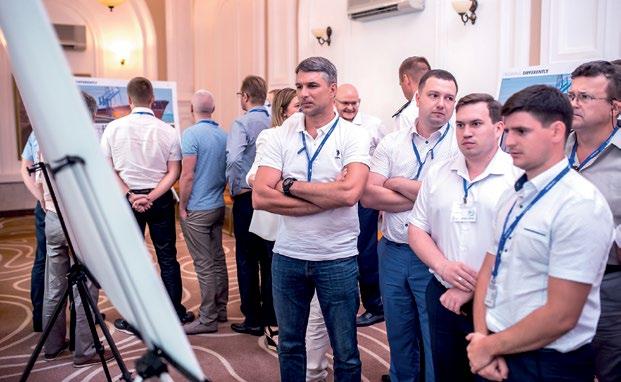
“Observing differently”
Rank / Name With Cenmar
C/O BUDZYAK Taras Since 2005
2/E POGORYELOV Anatoliy Since 2007
Pman POLONSKY Anatoliy Since 2018, for saving Capt. Prashant KUMAR’s life by administering abdominal thrusts

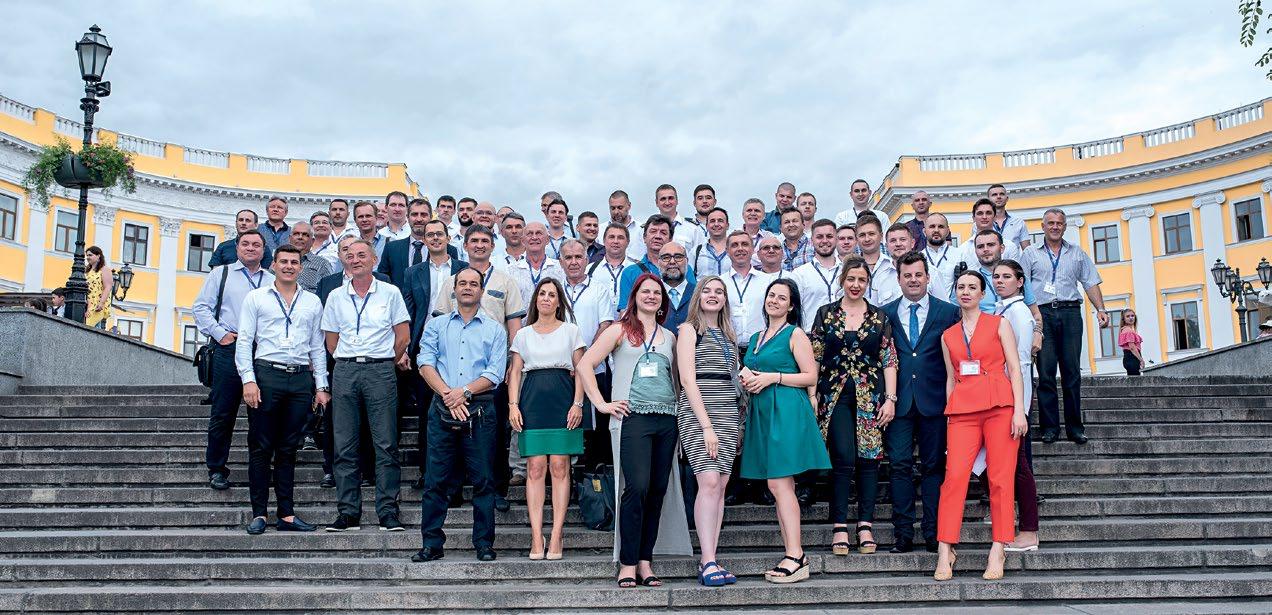
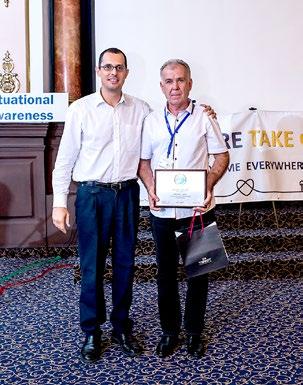
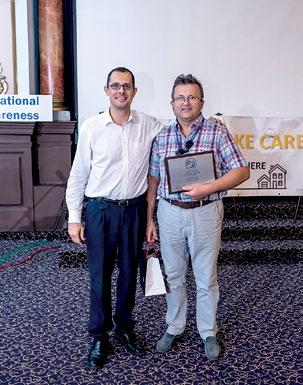

Yannis K. Prokopiou with Capt. Sergiy Andreyev (left) and Pman Anatoliy Polonsky.
On 27th April 1942, HMS Urge was ordered to depart from Malta to escape heavy bombardment. Her destination was Alexandria, but she was reported missing with 44 people aboard after failing to reach Egypt. In the 77 years since her disappearance the only clue to her whereabouts was a claim that she had been discovered off the Libyan coast. This claim gave rise to speculation that orders had not been obeyed, thereby casting a shadow over the reputation of the officers and crew of the U-class submarine. History showed that this was highly unlikely since her Captain Lt. Cmdr. Edward Tomlinson, officers and crew had been awarded medals for their successes, including the sinking of a German tanker supporting U-boats, crippling the Italian battleship Vittorio Veneto and sinking an Italian cruiser. Nevertheless, without definitive proof of her final resting place, doubt remained as to what actually happened to her in those dark days of WWII. This prompted Lt. Cmdr. Tomlinson’s grandson, Francis Dickinson, to request the assistance of maritime archaeologist, Timmy Gambin of the University of Malta, who is the leader of a team that has been conducting an underwater survey of the country’s territorial waters since the late 1990s. After accepting the request, Gambin and his colleagues researched the positioning of German and Italian minefields. The team then surveyed these areas using an autonomous underwater vehicle. Their research of naval records paid off as they spotted a wreck of what appeared to be a U-class sub at a depth of 430ft (130m) around 2 miles (3km) off the Maltese coast. Then they deployed a remote-operated underwater vehicle (ROV) equipped with a high definition camera to capture images that could be sent to Britain’s Ministry of Defence for verification. In November 2019, confirmation that the wreck was HMS Urge reached the Maltese maritime archaeologists.
British U Class Submarine HMS Urge underway By Royal Navy official photographer - This is photograph FL 3433 from the collections of the Imperial War Museums (collection no. 8308-29, Source: https://commons.wikimedia.org
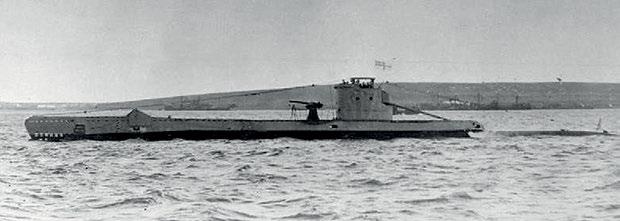
From the recorded images of HMS Urge lying upright on the sea bed, it was apparent that she had sunk as a result of a violent explosion that had caused a 22ft (7m)-long section of the bow to become detached from the rest of the vessel. The site of the sunken vessel, which was adopted by the people of Bridgend during WWII, is protected under Maltese and International law.
The find that allowed a 77-year-old mystery to be solved and dispelled speculation arising from the claim that the wreck of HMS Urge had been located off the Libyan coast has come as a welcome relief to Mr. Dickinson, whose grandfather was held in such high regard that he was deemed deserving of the Victorian Cross. It has given his family closure as they “have always wanted to know where HMS Urge and her gallant crew’s resting place is”.
Thanks to the joint efforts of Professor Timmy Gambin of the University of Malta’s Classics and Archaeology Dept., students from the University, Canadian naval researcher, Platon Alexiades, the Royal Navy’s official historians and Francis Dickinson himself, the memories of the gallantry displayed by those serving on HMS Urge will live on in their progeny. Sources: www.livescience.com, www.royalnavy.mod.uk
Food Culture: "Chicken Adobo"
If the Philippines has a national dish, it is very likely to be chicken adobo (adobong manok). Although the precise origins of this dish are unknown, it is believed that Malay voyagers were involved in the process of using vinegar and salt as preservatives for meat. With the acidity in vinegar and the high sodium content of common salt being known to prevent bacterial development, these two additives were regularly used in hot tropical climates before the age of refrigeration. When the Chinese arrived, soy sauce was introduced as a replacement for salt in some regions of the Philippines, and is now favoured as an ingredient in the marinading of the chicken. By the time the Spanish reached the Philippines, marinading was well established. The new arrival’s contribution was to lend the word “adobar” to the process. This Spanish word, meaning a marinade, gave rise to the name of chicken adobo. Due to the relative isolation of the communities cooking chicken adobo, many variations of the dish have been handed down from generation to generation. The only original constants were the clay pots in which the chicken was braised as well as the ingredients of garlic and black peppercorns. Even the
Chicken adobo on white rice By Jack Lawrence Source: www.wikipedia.org vinegar varied to an extent as it could be made from coconut, rice or cane. In some areas, liver was added and additional seasoning could come in the form of ginger, onions, bay leaves and a range of vegetables. Another option is fragrant white rice on which the chicken adobo is served.

This once humble dish has come a long way since its beginnings, spreading Filipino food culture to New York restaurants and Top Chef audiences across the globe. Now cooked in metal pots, chicken adobo does not have a recipe per se. Instead, it is a style of cooking that reflects any Filipino cook’s skill levels, an assertion to which any hard-working seaman who enjoys this flavourful dish will attest. Sources: www.theculturetrip.com, www.196flavors.com, www.thespruceeats.com
The Chinese Junk
The first record of a ship bearing a resemblance to a Chinese Junk dates back to nearly 5000 years ago, when the Chinese Emperor, Fu Hsi, was the ruler. Since then there have been many other references to this type of vessel, but it was not until around 1000 years ago that the Chinese Junk obtained a design feature that proved to be a giant leap forward in maritime technology. The feature in question is watertight bulkhead technology with compartments running both transversely and longitudinally. It was a significant modification that is now widely regarded as China’s most important contribution to the maritime industry in terms of safety at sea. Throughout the history of this iconic Chinese vessel, which was the first to have a rudder, there have been variations in size, but those in use today in China, Hong Kong and Southeast Asia are about 70ft (21m) long. As regards sails, those of the Chinese Junk are curved and elliptical. Made from panels of linen or matting and reinforced with bamboo bars, they require less rigging, making them immediately distinguishable from western sailing ships. Another feature that made the Chinese Junk more versatile relates to the ability to beach and navigate in shallow waters. Over the centuries, the Chinese Junk has had many functions. It has been used for fishing, transportation, exploration, trading, housing, tourism and even warfare. Today, the cultural heritage of this multifunctional ship, which is traditionally made from camphor, pine and fir timber, is preserved in areas like ZhangWan in Ningde City and Shenhu in Jinjiang City, both of which are located in Fujian province. Building a Chinese Junk involves skilled craftsmen plying their trade with traditional wooden tools. However, the construction of the bulkhead can only be carried out by a grand master who employs the techniques of rabbeting and caulking to enhance sturdiness and limit water ingress. At the turn of the century, there was growing concern that the cultural heritage of the Chinese Junk might be lost. So, a revival was put in place when one of a handful of remaining grand masters, Chen Fangcai, received an assignment to build a Chinese Junk from the Ming Dynasty using traditional techniques. In June 2008, the Princess TaiPing at 54ft (16.5m) long, and 45ft (13.7m) wide with her 13 watertight compartments set sail from Xiamen to San Francisco via Taiwan, Japan and Hawaii. During her ten-month voyage, which was planned to prove that Chinese Junks had the ability to cross the Pacific and return, two raging storms threatened to sink her, but her ancient technology proved equal to the elements. She was, though, unable to survive a collision with a chemical tanker when just 40km from Taiwan. Despite the demise of the Princess TaiPing, the voyage was considered successful. Nowadays the few remaining grand masters, who are in effect guardians of cultural heritage, are employed to make only model ships. This situation together with the increasing average age of grand masters has led the Chinese authorities to take measures to prevent the catastrophic loss of a cultural heritage. These measures include the implementation of statutes, media support, museum exhibitions and video recordings.
Issue 70-December 2019 Junks in Guangzhou Source: www.wikipedia.org
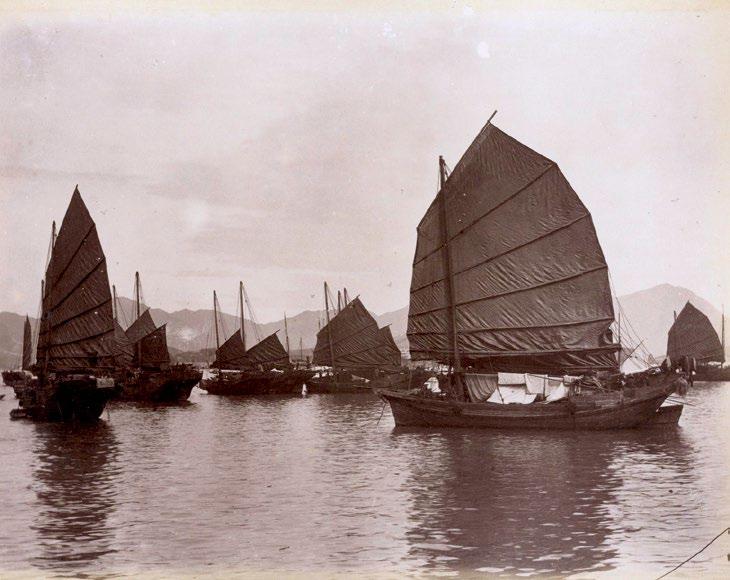
The Princess TaiPing Source: www.wikipedia.org
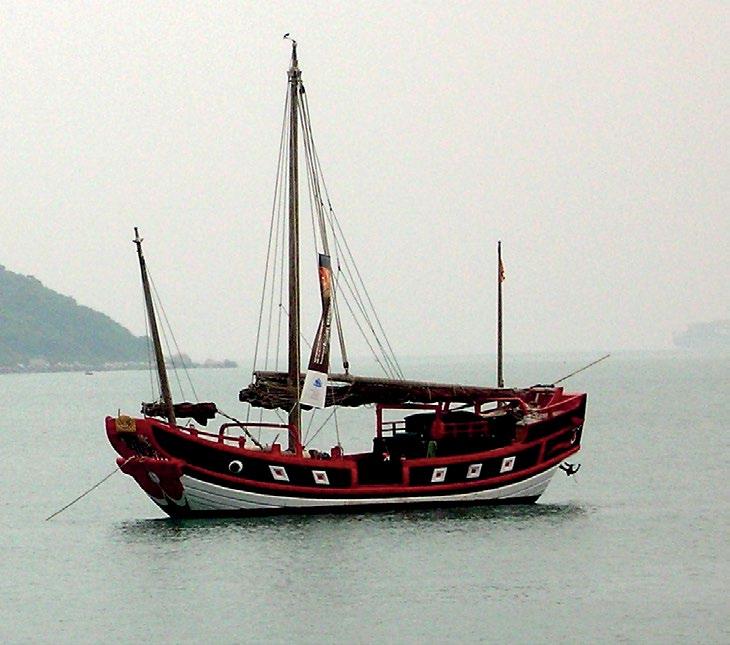
In this day and age, when the primary and often overriding factor is linked to financial gain, the respect for the cultural heritage of the Chinese Junk can only be described as admirable.
Digital Technologies – a training tool for seafarers?

A researcher examining the potential of VR in fire training exercises. By ESA. Source: https://commons.wikimedia.org


The possible use of virtual (VR) and augmented reality (AR) in the training of seafarers has recently come to the fore. These technologies have become more affordable and accessible over the past few years, thereby making them a potentially viable medium in providing seafarers with more efficient training techniques. In other sectors such technologies have been successfully integrated into learning programmes and there have been claims that using these socalled immersive techniques has increased trainee knowledge retention. One of the key points that has emerged in this learning method is that its effectiveness depends greatly on how engaging the experience is. In other words, the more realistic the VR training is, the greater the benefit will be. Proponents of virtual reality, augmented reality and mixed reality (MR) (a combination of the two) have put forward a number of advantages of immersive training which can be adapted for use in the maritime industry. The most compelling are as follows:
1) The experience feels real as the trainee’s senses are engaged, thereby allowing the operational boundaries to be safely pushed to the limit. 2) The training programme can be adapted for use on any specific vessel. This makes the training less generic. 3) The crew’s actions can be monitored remotely so that it can be established that safe practices and procedures are being adhered to. 4) Changing scenarios can be introduced to test the trainee’s skill to the full during fire training for example. 5) Savings can be made on travel to training centres. 6) There is an element of flexibility as the supervisor can provide feedback and support from the vessel or head office. 7) Challenges introduced in a rapidly changing shipping environment can be more easily addressed. 8) Electronic systems can be readily simulated to give a real-world experience. Although there is a strong case to be made for the use of VR, AR and MR as training tools in the shipping industry, the only area in which digital technology can be seamlessly integrated into training programmes at the moment is that of digital systems like ECDIS. This is because the simulation is able to mimic real life situations. Therefore, with increasing automation, training with VR, MR and AR programmes is likely to become more common. In areas that do not involve technology alone immersive techniques fall short of what is required. One shortcoming relates to VR experiences desensitizing users to danger as there are no real-life consequences for complacency or mistakes in the virtual world. Another pertains to the inability of the VR experience to engage all the learner’s senses. In a fire drill, for example, the heat from flames cannot be accurately reproduced, thereby potentially preventing the learner from being fully aware of the threat to safety.
Virtual Reality training in a maritime setting Source: www. nepia.com
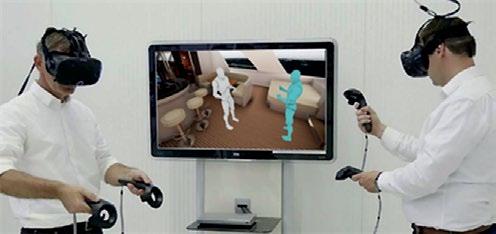
It would seem, therefore, that the use of reflective learning is currently the best way of imparting knowledge to the trainee. Additionally, resilience training, the implementation of a safety culture, safety interventions, the rejection of collective normalisation, recognition of the importance of barriers and the adoption of a state of chronic unease all make for a way of addressing the fundamental issue of safety more effectively. This does not mean that immersive training has no place in shipping. Indeed, it can be an effective supplementary tool in certain circumstances.
One of the world’s biggest seas at 1,491,000 sq. miles (3,862,000 km 3
), the Arabian Sea occupies the North-Westerly part of the Indian Ocean. Being connected to the Persian Gulf via the Strait of Hormuz and the Red Sea via the Bab el-Mandeb Strait, the Arabian Sea is well established as a trade route between Iran, Yemen, Oman and the UAE and India, Pakistan as well as several African nations.
The Arabian Sea is believed to have formed when the Indian subcontinent collided with Asia, an event that began some 50 million years ago. As a result of the collision, there are now numerous ridges and plains at the bottom of the sea, which has a mean depth of 8,970ft (2,734m) and descends to a maximum of 11,800ft (3,600m). Due to its strategic location, the Arabian Sea contains extremely busy shipping lanes. Vessels entering the Arabian Sea from the Persian Gulf are predominantly tankers while those coming from Suez and the Red Sea mainly carry general cargo. Apart from merchant ships, there are several different types of seafaring craft that engage in fishing activities. These range from dugout canoes, outriggers, dhows and mechanised travellers involved in small-scale operations off the east coasts of Africa, the Arabian Penninsula and the west coast of the Indian subcontinent to larger commercial fishing vessels originating from India, Pakistan, Iran, Oman, Yemen, the UAE and Maldives as well as from countries as far away as France, S. Korea and Japan.
Duqm: Oman’s emerging port city Source: insidearabia.com by Youssef Igrouane

One of the unique Arabian Sea humpback whales Source: http://www.sci-news.com/
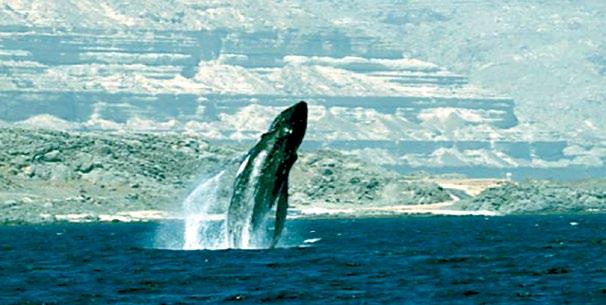
Widespread fishing in the Arabian Sea gives more than a subtle hint that this body of water is a rich aquatic habitat. Indeed, the levels of inorganic nutrients, particularly phosphates, are among the highest in the world. These undergo an upwelling due to currents flowing along the continental shelf and the strong south-westerly winds that blow during the rainy season. The most common catches are sardine, tuna, billfish, wahoo and
Issue 70-December 2019 lancet fish, all of which are pelagic (living close to the surface far from land) because of the depleted oxygen content at subsurface levels brought about by the high phosphate concentration.
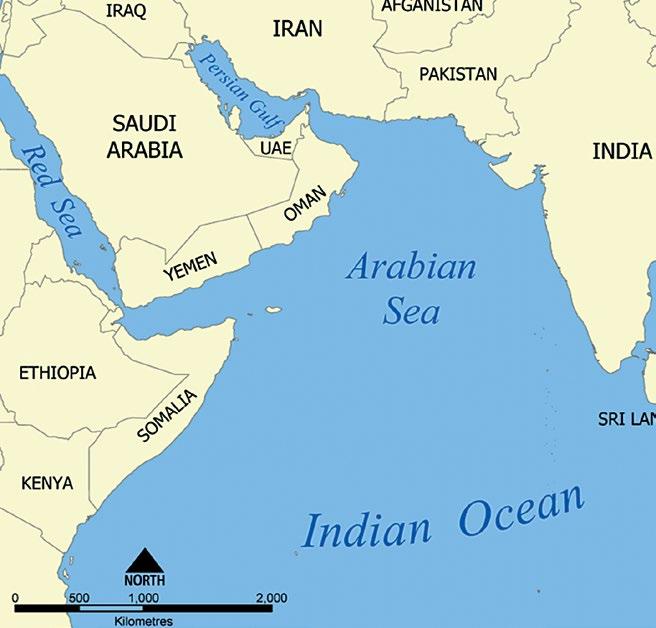
Although conditions are perfect for fish in the Arabian Sea, there are concerns that overfishing may lead to dramatic declines in fish stocks. These concerns are being addressed by authorities investigating the most sustainable fishing methods. There is also action being taken to protect the 20 species of whale and dolphin and the 4 species of turtle by the Renaissance Whale and Dolphin Project in Oman. In order to achieve one of its primary goals of spreading an awareness of the importance of conservation, the Project has embraced a partnership between local and international experts. Among the species being researched by these authorities on cetaceans is the humpback whale. More specifically, a unique population of around one hundred isolated individuals that live off the coast of Oman year round (they have no migrate thanks to the exceptionally rich waters) are being studied so that the impact of vessel traffic on them can be minimized.
The problems facing the conservationists have recently been compounded on two fronts. Firstly, there has been a resurgence of cruise itineraries in the Arabian Sea. Secondly, certain ports in the region are being developed. One such port is Duqm, whose development is important for the Sultanate of Oman. Fortunately, the port authorities are environmentally aware and have taken measures to reduce the risk of collision with whales, which include a ten-knot speed limit on vessels that enter and leave the port area.
The formation of the Renaissance Whale and Dolphin Project together with the Port of Duqm’s concrete steps to protect marine mammals is yet another example of how the goals of both conservationists and the shipping industry are not mutually exclusive. The Omani approach of moving forward with national development while conserving marine heritage is one that should be adopted on a wider scale if maritime activities and maritime creatures are to co-exist across the globe. Sources: www.britannica.com, www.newworldencyclopedia.org, www.youtube.com
1. Make the names of two countries using all the letters in the following sentence: DAE CAN GO ALL IN. 2. The chemical symbols for gallium, iodine, oxygen and tin can be rearranged to form the name of a large city. What is the name of the city? 3. Which three-letter word can be used to complete the following words? TU_ _ _ G, _ _ _ ARY, AL _ _ _ O and TUR _ _ _ E 4. A farmer has chickens, ducks, dogs and sheep on his farm. These animals have a total of 224 legs, 52 of which belong to two-legged creatures. If there are twice as many sheep as chickens and twice as many ducks as dogs, how many sheep does he have? 5. Τhe colours red and black both equal 1. Yellow, blue and white all equal
Test Brain your two, while orange and violet equal three. What does turquoise equal? 6. I can run, but I cannot walk. I can affect the way you talk. Without me you can’t really taste food. And turning me up is just plain rude. What am I? 7. Patricia accidentally drops her ring in her coffee, but when she retrieves it, the ring is not wet. Why? 8. A man puts a small coin into a bottle and then puts a cork in the top of the bottle. How can he get the coin out without pulling out the cork or breaking the bottle?
Answers at the foot of the page
1. Which port lies at the mouth of the Pasig River? A. Trincomalee B. Kalimantan C. Chittagong D. Manila
Quiz
6. The world’s largest cruise ship, Symphony of the Seas, has 18 lifeboats. What is the capacity of each of these lifeboats? A. 370 B. 340 C. 310 D. 280
2. In which sea is the world’s biggest anoxic basin? A. Dead Sea B. Black Sea C. Red Sea D. Barents Sea 3. Which ship sank in 1628 after completing less than a mile of her maiden voyage? A. Vasa B. Sea Venture C. Speedwell D. Batavia 4. Which type of lens should seafarers onboard wear in order to protect their eyes from dazzle without impairing visibility? A. Polaroid B. photocrome C. neutral tint D. 90% absorption 5. Which of the ten most wanted invasive aquatic species devastated fisheries in the Black Sea in the 1980s? A. zebra mussel B. mitten crab C. North Pacific seastar D. comb jelly 7. A polar research vessel was launched at Cammel Laird shipyard in Birkenhead, UK on 26th September 2019? After which British naturalist has she been named? A. Charles Darwin B. Sir David Attenborough C. Alfred Russel Wallace D. Gilbert White
8. In which country was the historic vessel, HMS Erebus, built? A. England B. Scotland C. Northern Ireland D. Wales
9. Which poisonous gas smells like rotten eggs at low concentrations and causes people to lose their sense of smell at a much higher concentration? A. carbon monoxide B. sulphur dioxide C. hydrogen sulphide D. hydrogen cyanide
10. Which of the following ports is closest to the Greenwich Meridian? A. Tema, Ghana B. Le Havre, France C. Barcelona, Spain D. Algiers, Algeria
Answers at the foot of the page
Find a keyword associated with at least one article in this issue by solving the clues and rearranging the letters in the boxes with black borders.
1. German WWII ship (8)
2. Country on Arabian Sea (5)
S R
M
Keyword
3. The ‘A’ in ‘AR’ (9)
4. Material once used in cooking pots (4)
5. Original Junk feature (6)
U E E
U A
R
6. Surname of HMS Urge’s Commander (9)
7. Feeling gained from teamwork (5)
8. Consequences of high energy collisions (12)
9. Type of deck treatment (13)
10. Strengthened during forums (5)
Y O M S N
A Y
T PT C
O SL G
N D
Answers
KEYWORD SOLUTIONS 1. Bismarck 2. Yemen 3. Augmented 4. Clay 5. Rudder 6. Tomlinson 7. Unity 8. Catastrophic 9. Hydroblasting 10. Bonds Keyword: DRYDOCKING
TEST YOUR BRAIN answers: 1. Angola, Iceland 2. Saigon 3. Bin 4. 40 5. 5 (number of vowels in the words) 6. A nose 7. The coffee is dry and still in the jar 8. Push the cork into the bottle, the remove the coin QUIZ answers: 1.D 2.B 3.A 4.C 5.D 6.A 7.B 8.D 9.C 10.A
Named after Maximilian von Spee, this warship was built in Wilhelmshaven. The Graf Spee was launched on 30 June 1934 and commissioned two years later. At 186m in length, the vessel had disproportionately large guns, which led to the name of “pocket battleship” being used to describe her. The primary armament consisted of six 11-inch (28cm) guns in two triple-gun turrets. This was backed up with eight 5.9-inch (15cm) guns, twenty anti-aircraft guns and a pair of quadruple torpedo launchers. The Graf Spee was fully armoured and the first German warship to be fitted with full radar equipment. Another feature that distinguished her class of vessel was her top speed of 28.5 knots coupled with the ability to accelerate faster than the vast majority of vessels. All these capabilities led to the Graf Spee being deployed in the South Atlantic to fulfil the role of commerce raider just three week after the outbreak of WWII. Having proved highly successful in this role, the Graf Spee attracted the attention of the Royal Navy. Due to the urgent nature of the mission to neutralise the threat posed by the Graf Spee, no fewer than nine squadrons were dispatched to carry out a search and destroy operation. The search component of the mission was aided by the Blue Star vessel, the Doric Star, being able to send a distress call before being captured by the Graf Spee off the coast of South Africa. Eleven days later, the Graf Spee was sighted by ships in Force G under the command of Commodore Henry Howard, who correctly anticipated the German warship’s next move to the River Plate. These comprised the heavy cruiser, HMS Exeter, and the light cruisers HMS Ajax and HMS Achilles at that particular time. The commander of the pocket battleship, Hans Langsdorff, was aware of Force G being in the vicinity of the River Plate estuary and chose to attack. This was a significant blunder as it effectively negated the Graf Spee’s advantage of being able to engage at a distance with the eleveninch guns. Moreover, the move brought her within range of G Force’s weaponry.
Sponsored by the granddaughter of Chancellor Otton von Bismarck, the Bismarck was built by Blohm and Voss in Hamburg. This fortress of a warship was launched on 14th February 1939. After being commissioned in August of the same year, testing was conducted in Kiel Bay. At 450.5m in length, the Bismarck was the largest warship afloat. Despite her size and thick armour, the Bismarck could attain a speed of 30 knots. The Bismarck’s first voyage began on 19th May 1941, when the massive vessel embarked on Operation Rheinubung to attack Allied convoys carrying oil, food and other basic supplies to Great Britain from across the Atlantic. Shadowed by the heavy cruiser, Prinz Eugen, the floating fortress caused havoc in the effort to cut off British supplies with the aim of starving the British into surrender. Having acquired information about the Bismarck’s location, the Royal Navy ordered a fleet to track down the German warship. In this fleet were HMS Prince of Wales and HMS Hood, Britain’s largest battleship. On 24th May 1941, the first blows between HMS Hood and the Bismarck were exchanged in the Denmark Strait. The Bismarck struck first and decisively. HMS Hood’s ammunition magazine was hit, causing a massive explosion. All but 3 of the 1421 souls aboard managed to escape. The Bismarck had a ruptured fuel tank and was taking on water, so Captain Ernst Lindermann ordered a withdrawal. Determined to gain revenge, Admiral John Tovey demanded that the Bismarck be hunted down prior to reaching safe haven. Before the Bismarck could obtain protection from the Luftwaffe, the aircraft carrier, HMS Ark Royal, dispatched bombers to launch an attack. In poor visibility, however, friendly fire hit HMS Sheffield. Fortunately, there was no severe damage as the warheads failed to detonate.
Admiral Graf Spee
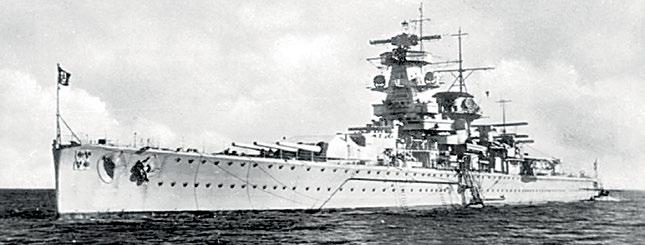
Panzerschiff "Admiral Graf Spee". Source: www.wikipedia.org
The conflict began with the Graf Spee engaging HMS Exeter. The latter vessel was struck first. The bridge crew except the Captain and two other perished. Then the two light cruisers joined the battle. HMS Exeter was hit again, but at some point managed to damage the Graf Spee’s fuel processing system, causing the pocket battleship to withdraw the River Plate estuary. Following the withdrawal, Han Langsdorff made his second error when he set a course for Montevideo in neutral Uruguay rather than for the more welcoming Mar del Plata in Argentina. Langsdorff requested a two-week stay to make repairs, but this was met with stern opposition from the British diplomat, Eugen MillingtonDrake, who stated that under the 13th Hague Convention, the Graf Spee should be expelled within 24 hours. The German commander refused, bringing about a stand-off. So, British and French merchant vessels began to sail every 24 hours, thereby preventing the Graf Spee from leaving after having some repairs made by invoking Article 16 of the Convention. The final move saw Langsdorff being fed false intelligence. He was informed that Force G was nearby and relayed this news to the German high command, who ordered him to scuttle the Graf Spee in the River Plate on 17th December 1939. Source: www.thought.co.com, www.wikipedia.org

Bismarck
German Battleship Bismarck in World War II. Source: www.thoughtco.com
After rearming, the bombers along with biplanes located the Bismarck and were able to target the undefended rudders (the Bismarck’s Achilles’ heel), thereby incapacitating the German warship’s steering. Only able to move in circles, the Bismarck could only wait to the destroyed. On 27th May, three British warships closed in and completed the mission. Only 110 of the 2102 on board survived.
There can be no doubt that the Graf Spee and Bismarck were fine examples of naval engineering. Therefore, the biggest chinks in their armour were human misjudgements. These took the form of poor leadership decisions in the case of the Graf Spee and the air of arrogance and invincibility brought about through the idea that the Bismarck was unsinkable. If a lesson can be learned from these stories, it is that leaders must have excellent decision making skills and an appropriate mindset in order to be effective.

